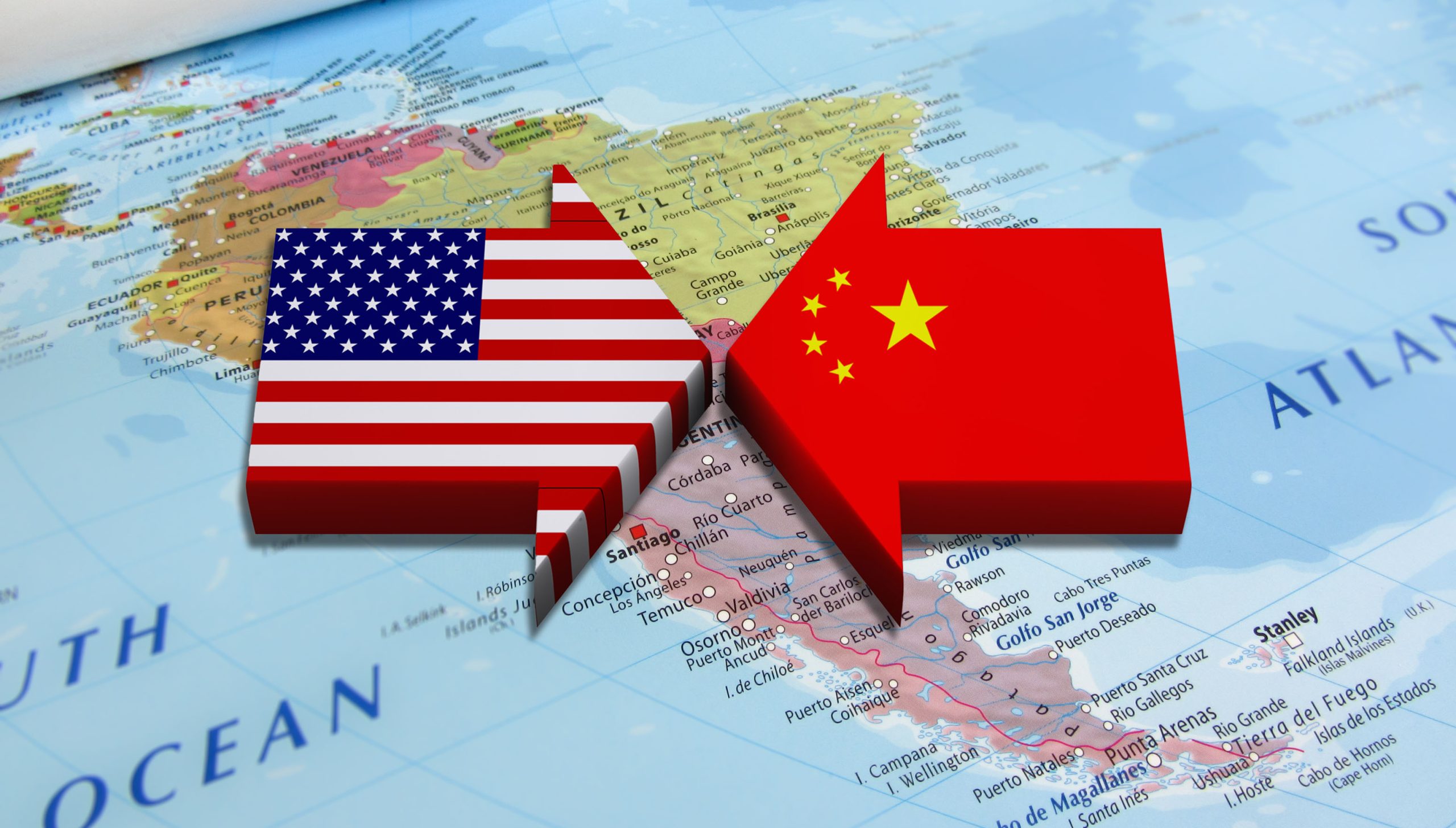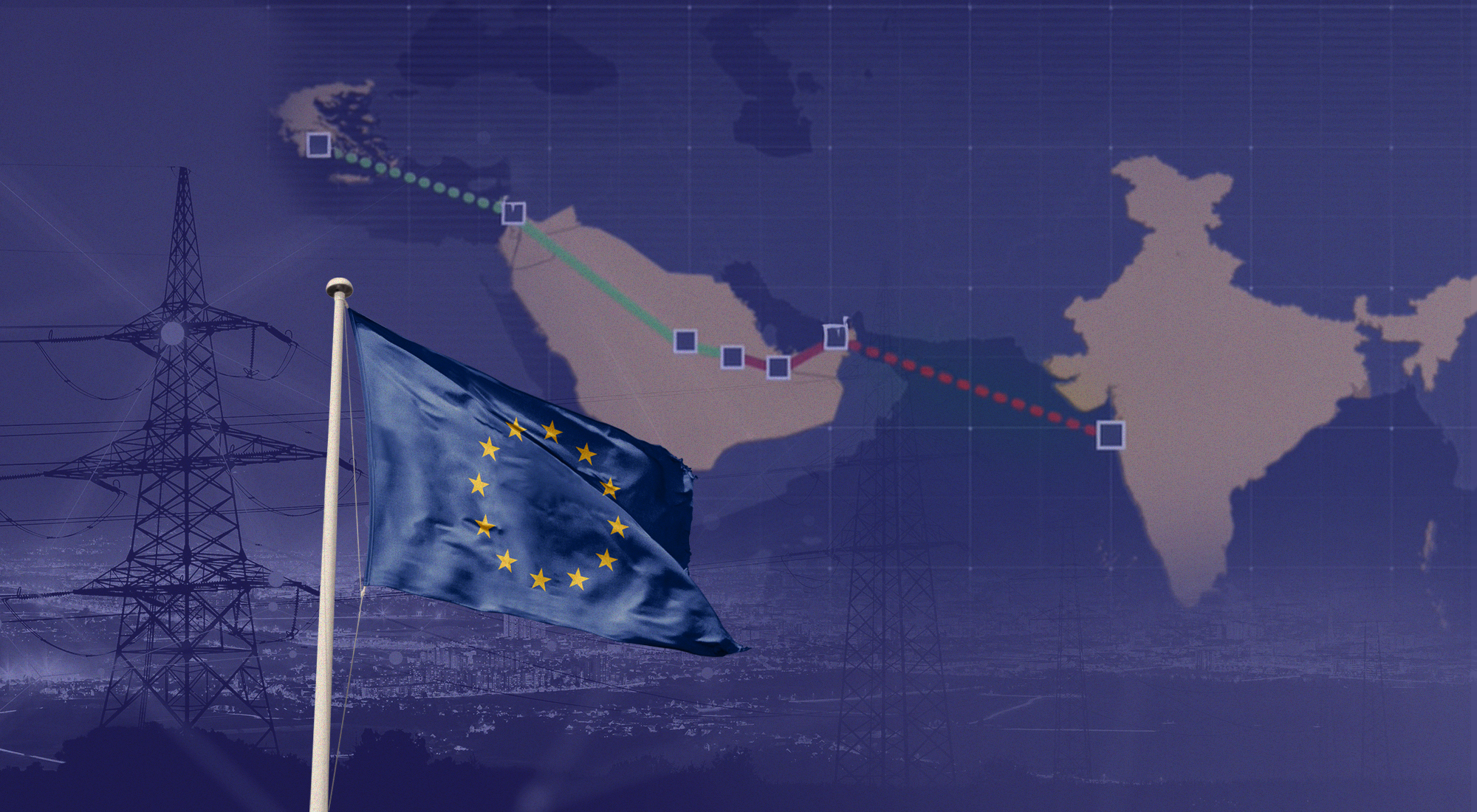The US-China relations reached their lowest in decades during the Donald Trump administration. They entered into a tariff war after Trump accused China of unfair trade practices and violation of intellectual property and civil rights. The tension between the two major powers spilled worldwide, particularly in Latin America, which became an important theater of this geopolitical conflict.
With President Joe Biden in office, questions have arisen about the potential impact of the growing Chinese presence in Latin America. It is also unclear whether Biden’s new approach to Latin America will curb China’s expansion or enable Beijing to exploit Biden’s preoccupation with domestic problems and further establish itself in the region. This is also linked to the question about the Latin American countries’ position toward the Biden administration and their response to the US-China competition.
This paper, divided into five parts, tries to answer these questions. The first part deals with the current state of the US-China rivalry in Latin America; the second discusses the Biden administration’s view on China’s rise in Latin America and how to deal with it; while the third focusses on the nature of the US relations with Latin America during the Biden era; the fourth explores the US approach to facing the rapprochement between China and Latin America; and the fifth analyzes the factors determining the future of the US-China rivalry in Latin America.
First: The US-China rivalry in Latin America
Given its enormous natural resources and strategic location in proximity to the US, Latin America is one of the important regions where China has been keen to strengthen its presence. Beijing largely succeeded in latching on to the US disinterest in Latin America during the Trump era and stepped in to fill the vacuum. This escalated the US-China rivalry in Latin America across various arenas.
1- Fierce economic competition: In a few years, China has become a significant Latin America player in terms of foreign trade volume, investment flows, and financial cooperation. [1] While the Biden administration tries to re-engage in Latin America, it would face a more intense geopolitical competition considering China has already has significant economic and diplomatic successes against the backdrop of the Trump administration’s neglect and inconsistent policy toward the region. [2]
Currently, China is the largest trade partner of Argentina, Brazil, Chile, Peru, and Uruguay. It also has well-developed economic relations with Colombia and Mexico. It has invested tens of billions of dollars in Brazilian power grids, Argentinian highways, Mexican wireless networks, Peruvian port terminals, and Bolivian lithium processing projects. [3]
Outside of Mexico, China’s trade with the region overtook the US in 2018 and extended in 2019 to more than $223 billion versus US trade of $198 billion. [4] Furthermore, China provided $137 billion in loans to Latin America between 2005 and 2019. Venezuela alone received $62 billion in loans from China. These loans helped strengthen China-Latin America relations and increased China’s influence in the region instead of the declining US presence. The Chinese Belt and Road Initiative (BRI) now involves 19 countries in the region. [5]
In 2020, Latin America emerged as a happy hunting ground for Chinese investors who acquired large Latin energy and infrastructure companies. In 2020, the Chinese State Grid Corp acquired control of a power network company in Chile in a deal estimated at €4.3 billion ($5.2 billion), including the Chilean company’s debt, China’s biggest acquisition overseas in that year.[6]
2- The expansive use of medical diplomacy: The outbreak of Covid-19 provided an unprecedented opportunity for China to implement its Latin American goals. It used “medical diplomacy” to expand its sphere of influence, advancing supply chains, strategic acquisitions, and loans to Latin American countries. [7]
China has seized the opportunity during the pandemic to deepen ties across Latin America, sending medical supplies, including ventilators, and masks to combat Covid-19. In recent months, Argentina announced a range of new initiatives with China in vaccine trials, currency swap, cooperation on space, and military courses for students. Meanwhile, Beijing provided a $2.4 billion loan to Ecuador last year.[8]
In March 2020, the US rejected Venezuela’s request for financial aid to tackle the Covid-19 pandemic as it did not recognize the Maduro government. On the other hand, China stepped in and provided medical assistance to it and other Latin American countries. [9]
3- Growing trust in China: In recent years, governments and people of Latin America have demonstrated a more positive view of China while there has been a decline in the way the US is viewed. Chinese trade and investments have led countries such as El Salvador, the Dominican Republic, and Panama to revoke their recognition of Taiwan in favor of the “One-China policy”. [10]
The strong trade partnerships between China and Latin America forced Brazilian President Jair Bolsonaro to retract his rhetorical attacks on China, as it has become the leading trade partner of his country, despite his close relationship with Trump.[11]
Some statistics reveal that China surpasses the US in Latin America, not only in terms of its economic presence, but also in its citizens’ perception. A survey conducted by AmericasBarometer in early 2019 showed that the trust in the American government had declined in 11 out of 17 Latin American countries included in the survey, compared to the levels of trust in 2017. It also showed that in 10 countries the US government had lower trust than China’s government in early 2017. The negative gap expanded for the US in 2019 survey with 13 Latin American countries having lower trust in the US government than China’s government. [12]
4- Security cooperation: China’s growing economic leverage – including Latin American countries’ need for trade, loans, and investments – might make the region more willing to expand Chinese security cooperation. [13]
In recent years, the Chinese People’s Liberation Army (PLA) has become increasingly active in Latin America. It participated in the UN peacekeeping operations in Haiti and deployed its hospital ship on three separate occasions to the region’s ports. It also periodically sent its warships to conduct joint exercises besides organizing training courses and visit exchanges between military and police officers on both sides.
Furthermore, China-based defense companies such as the NORINCO group have sold a broad array of military equipment to the region’s security forces, including to anti-American regimes such as Venezuela and friendly ones such as Colombia and Peru.[14]
Currently, China is showing a huge interest in developing seaports and deep-water ports and has already signed 40 commercial port deals in the American SOUTHCOM’s area of operations. The danger of this increasing Chinese security and military presence in Latin America lies in the fact that – in the event of a prolonged fight in Asia between China and the US–China would more likely use it in its military confrontation with the US. [15] Hence, it is not surprising that the Pentagon sees Latin America as a ‘battlefield’ in a coming World War III and is preparing accordingly. [16]
Second: Biden administration and China in Latin America
In the face of the enormous challenges in Latin America, the Biden Administration will likely adopt a two-pronged strategy to deal with the growing Chinese influence, as follows:
1- Prevalence of competitive attitudes: During the last decade, the US has sought to curb Chinese influence in Latin America through a series of programs, threats, and incentives. The Trump administration pressured governments in the region to drive them away from Beijing’s offers. In 2018, Congressional Republicans threatened to remove El Salvador from the Comprehensive Development Plan for Central America after it accepted a $150 million unconditional loan from China to finance infrastructure projects. [17] President Biden’s view of China’s growing influence in Latin America does not differ much from Trump. Senior officials in his administration have been issuing statements calling China the principal global threat to the US.
The new US Defense Secretary, Lloyd Austin, emphasized that China presents “a growing threat” and will focus on the Pentagon’s activities. He described China as his country’s primary rival and stressed showing a credible deterrence against it. [18] The US Secretary of State, Antony Blinken, is on record having said that China is the major test for the US power more than any other country. [19]
Biden has pledged to restore Washington’s role as a global leader after four years of Trump’s “America First” policies. He also said that the declining US influence in Latin America is a threat to its national security. [20]
Therefore, Biden is expected to maintain Trump’s hardline policy toward Beijing. The principle that China is a strategic rival to the US has bi-partisan support, including China’s role in Latin America. What might change is the instruments rather than the goals or the understanding of the problem. [21]
2- Cooperation on specific issues: Although rivalry and confrontation will dominate Biden’s policy toward China, this does not rule out the possibility of cooperation. During his Senate confirmation hearing as Biden’s nominee for US Secretary of State, Antony Blinken said: “I believe that President Trump was right in taking a tougher approach to China,” adding that “there are, as I see it, rising adversarial aspects to the US-China relationship, certainly competitive ones, and still some cooperative ones when it is in our mutual interest.”[22]
In December 2020, the Washington Office on Latin America (WOLA) published a report recommending that it is essential for Biden to coordinate with partners in Europe and Latin America and encourage them to broker a solution that would lead to a restoration of democracy in Venezuela. The report also emphasizes the need to engage Venezuela’s allies in these efforts, particularly Russia and China.[23]
Some experts think that the Biden administration will look for ways to collaborate with China on critical issues, such as the environment and joint infrastructure financing. However, he will continue to be cautious of China’s long-term intentions in the Western hemisphere. [24]
Third: The US-Latin America relations during the Biden era
Several issues of mutual interest to the US and Latin America would come up during the Biden administration; some of them would be controversial, as shown below:
1- Coordination of common positions:
The Biden Administration will seek to address some key issues through cooperation with Latin American countries, such as immigration and Venezuela’s crisis.
- The immigration issue
Immigration is a key issue of interest for the Biden administration. In his first 24 hours in the office, Biden halted the construction of the Mexico border wall ordered by Trump and declared an increase in the number of immigrants allowed in the US. He will likely be less hostile to the so-called Northern Triangle (El Salvador, Guatemala, and Honduras) and Mexico regarding immigration. [25]
The new administration plans to do more to fight the root causes of mass migration by allocating $4 billion for helping Northern Triangle countries fight poverty, crime, and unemployment within their borders [26] – in contrast to Trump, who cut US foreign aid to them. [27]
Biden also plans to support the Latin American countries hosting the bulk of the Venezuelan refugees. [28] However, a return to the traditional asylum process and a US immigration law reform would create space for tougher negotiations with Mexico and Northern Triangle countries on fighting organized crime cartels. [29]
- Venezuela’s political crisis:
Venezuela’s crisis was a contentious issue between some Latin American leaders – particularly presidents of Argentina, Cuba, and Nicaragua – and the US during Trump’s era. This was one of the reasons why no solution to the crisis was reached.
Alliances are the cornerstones of President Biden’s foreign policy agenda, and his administration is expected to work with allies to address major global challenges. Thus, it is not unlikely that the US will coordinate with Latin American countries and the EU to support a peaceful democratic transition in Venezuela, as the Biden administration rejects a military solution to this crisis.[30]
In this context, Biden said: “the sanctions-centered approach to Venezuela and the illusory warmongering favored by Trump will shift.” [31] Also, Antony Blinken said that “the US is looking to ‘more effectively target’ sanctions on Venezuela to put pressure on Maduro” and emphasized “the need for better coordination and cooperation with like-minded countries.” [32]
In addition to that, Vice-President Kamala Harris said that “we should continue to support multilateral diplomatic efforts toward a peaceful transition to legitimate new elections, which must be the ultimate goal.” [33]
2- Divergence of views on several issues:
Despite the cooperative approach that Biden will take in dealing with Latin American issues, there may be disagreements over other issues, particularly climate change and democracy:
- Climate change:
Mexico and Brazil are likely to come under pressure from Biden on this issue due to Mexican President López Obrador’s plans to expand Mexico’s oil and coal industries and Brazilian President Jair Bolsonaro’s lax attitude toward protecting the Amazon rainforest in Brazil. Indeed, Biden and Bolsonaro have already clashed over the Amazon issue following Biden’s statements during his presidential campaign that there would be “significant economic consequences for not accepting US help to protect the Amazon.” [34]
Thus, it is likely that Mexico and Brazil may soften their policies and take a more environmentally-friendly course in the face of Biden’s intention to tie environmental commitments more closely to future trade negotiations between Washington and other countries. This suggests that the region’s countries may face profound difficulties in signing new free trade agreements with the US. [35]
- Support for democracy:
Biden is expected to have a special interest in promoting democracy. The US aid to Latin American countries is more likely to come with conditions that enhance democracy, like fighting corruption or keeping elections free and fair, particularly with the decline of popular support for democracy as the best form of government in the region.[36]
A survey conducted by AmericasBarometer revealed that support for democracy decreased in eight Latin American countries between early 2019 and early 2019. Less than 65 percent of Latin American citizens in the majority of countries in the region believed that democracy is the best possible form of government. [37]
Meanwhile, democracy will face a serious challenge in Brazil in 2022 when Bolsonaro runs for re-election because he is expected to contest the election results if he loses. He is also likely to view Biden’s focus on human rights, democracy, the environment, and anti-corruption efforts as a direct threat to his power. [38]
Fourth: US approach in the face of China-Latin America rapprochement
There are some questions about how the new US administration will respond to the burgeoning relations between China and Latin America and what alternatives are available to the Biden administration to face them. Some of these alternatives can be:
1- Paying attention to the region:
The Biden administration is expected to pay special attention to Latin America to curtail the increasing Chinese presence. Biden has extensive knowledge of the region, and during his vice-presidency in the Obama administration, he was largely in charge of relations with Latin America, which he visited 16 times. [39] In March 2020, he told American Quarterly that “They should be on notice that Trump’s incompetence and neglect in Latin America and the Caribbean will end on day one of my administration.” [40]
Latin America has been present in Biden’s mind from day one of his presidency, as evident in his pick of nominees for posts in his administration. He has appointed the first Latino to lead the US Department of Homeland Security and picked another Latino descent for Education Secretary.
Besides, the new Foreign Secretary Anthony Blinken has an in-depth knowledge of Latin America. Incidentally, Mexican President and Canadian Prime Minister were the first foreign leaders Biden called following his inauguration on January 20, 2021.
2- Launching development initiatives:
Although Biden shares Trump’s goal of curbing the rising Chinese influence in Latin America, his tactics are more likely to be dramatically different. Rather than futile scolding of regional leaders to reject Chinese investment, Biden will offer alternatives to finance critical infrastructure, such as telecommunications. [41]
In this context, Biden is unlikely to impose tariffs on regional allies. Instead, he will invest more in the region’s prosperity and its capacity to confront challenges ranging from organized crime to natural disasters and provide humanitarian aid to these countries. [42]
3- Maintaining political and economic pressure tools:
In the long run, the US seems to be in no position to contain China’s economic ambitions in Latin America. However, this does not mean it lacks the tools to pressurize Latin American countries with very close relations with China. It could cut financial aid through multilateral organizations such as the IMF or the Inter-American Development Bank (IDB), and impose retaliatory commercial measures and tools already used during the Trump administration.[43]
Fifth: Determinants of the future of US-China competition
Several factors would determine the future of the US-China competition in Latin America, such as:
1- Internal changes in the region:
Changes in economic and development conditions are the key determinants of the nature of competition between Beijing and Washington in Latin American countries. These may provide an opportunity for either country – if it can use them to its advantage – to support its presence and influence in the region. In other words, facing difficult economic conditions will make them in dire need of external economic and development assistance.
According to several economic forecasts, Latin America will face an unprecedented rise of poverty and inequality due to the consequences of the Covid-19 pandemic and the effects of rampant corruption, mismanagement, violence, and absence of security in the region. [44]
The IMF estimates that in 2020, the region’s economy contracted by an estimated 8.1 percent. The Lancet journal indicated that 231 million people were living in poverty in Latin America in late 2020. [45] Although the root causes of instability in Latin America, such as bad governance, violence, and inequality, are deep-seated and will take years to address, the current crisis creates an opportunity for Washington to provide humanitarian and development assistance to the countries of the region. [46]
While the US and Europe still suffer from the economic effect of the Covid-19 pandemic, China’s GDP growth is expected to reach 8.5 percent in 2021, making it the most likely country to help Latin American countries tackle the pandemic-induced crises on the one hand, [47] and to increase the presence of its companies in strategically-prioritized sectors in the region, including mining, petroleum, agriculture, electricity, and telecommunications. [48]
Contrary to the US, China does not attach any political strings to its economic and development assistance to Latin American countries, such as democracy or good governance. This opens the door wide for Beijing to take advantage of its assistance and enhance its presence in the region.
2- Results of upcoming elections in some Latin American countries:
The US relations with Latin American leaders will be affected by upcoming elections in Chile, Ecuador, Honduras, and Peru, mid-term legislative elections, and state governors’ elections in Argentina, Bolivia, El Salvador, and Mexico. This will especially be the case if the results turn out to favor left-leaning groups with socialist tendencies close to the Chinese model. [49]
More recent elections show growing dissatisfaction with the region’s status quo and public willingness to shift to the left. The advance of the left helps China to significantly expand its economic ties and influence in the Americas, given the convergence of political views and perceptions between Beijing and the leftist governments in Latin America. [50]
While some leftist governments like Venezuela and Argentina will maintain strong relations with China, some rightist governments will continue to strengthen their relations with Beijing not for ideological reasons or as a deterrence against the American hegemony but because they seek to diversify their international alliances and enhance their sources of power. [51]
3- Response of Latin American countries to the US-China rivalry:
Latin American countries’ response to US-Chinese competition and their relations with Washington and Beijing will be a key determinant of the future of the rivalry between the US and China. Joe Biden’s election will have a powerful impact on the calculations of elites on both the left and right across the region.
Some Latin American governments that are hostile to the US, including the Maduro regime in Venezuela and the Ortega regime in Nicaragua, may temper their behavior in the short term, hoping to avert US sanctions and other pressures. [52] If this happens, it may largely de-escalate the current tensions between the US and these countries and improve Washington’s future relations.
Right-wing pro-Washington governments will seek to ensure continued US support for their domestic policies during the Biden era, especially as some of them, including Colombia and Brazil, face strong popular pressure. Suppose these governments feel a loss of US support or a change in the US policy toward them. In that case, they could retaliate by restricting their engagement, as regional actors, in a number of central issues, such a Venezuela’s crisis [53] in which the US takes a special interest and which needs mobilization of regional support to resolve it peacefully.
Some right-wing governments may even move closer to China if the new US administration puts more pressure on them due to differences in views on climate change and democracy. This eventuality will pave the way for more Chinese presence in the region.
As the countries of the region cannot pin their hopes on one partner to overcome major challenges they face, they will try to avoid taking sides between the US and China and seek to maximize their benefit from restarting their economic growth. [54]
Some Latin American countries benefited from the US-China trade war, including Brazil and Argentina, which increased exports of agricultural products to China. Mexico was labeled by some as ‘the winner of the trade war,’ as Chinese and American manufacturing companies relocated to Northern Mexico to circumvent tariffs and ease their access to the US market. [55]
4- The nature of China’s practices:
As part of its expansionist and interventionist strategy, China will likely make Latin America a renewed foreign policy priority in 2021, because its geographic location has a strategic value to China. Also, China imports industrial and foodstuff commodities from Latin America, chiefly soybeans, copper, petroleum, and iron. Therefore, China will seek to further dominate the commodity market in Latin America to ensure a continued source of domestic growth and enhance its influence in the Western hemisphere. [56]
However, paradoxically, deepening Chinese attention to Latin America may undermine China’s objectives. China has framed its regional presence to Latin American governments as an ‘alliance of equals,’ depicting itself and Latin American countries as collaborative developing nations. If Latin American countries perceive that China is using the region as a stepping-stone for great power competition, some regional governments will have less incentive to collaborate with it. Also, leftists with nationalist beliefs may find that using Chinese money is politically indefensible if those funds are associated with neocolonialist endeavors. [57]
5- Efficacy of US strategy:
Currently, the US cannot restore its power and influence in Latin America by simply increasing its economic and diplomatic presence in the region. Latin American countries are not expected to sever their relations with China, given that annual bilateral trade is projected to hit $500 billion by 2025. [58]
The future of US-China competition is hinged on the strategies and tactics that the Biden administration will use in the face of China-Latin America convergence. It will also depend on the alternatives the US can provide for the countries of the region, whether in the form of investment, financial aid or technological assistance, as Trump’s threats failed to stop the region’s governments from continuing their cooperation with Beijing. The first real test for the new US administration will be the Chinese Huawei company’s investment to upgrade the internet infrastructure in Latin America to 5G. [59]
Conclusion:
In light of the growing influence of China in Latin America, Beijing’s need to establish its presence in the region to secure access to raw materials necessary to support its economic growth, and Biden’s drive to restore the US leadership in the Western hemisphere and world, the rising tensions between Washington and Beijing are unlikely to recede, even with a Democratic administration in the White House. Both parties (Democratic and Republican) take tough positions toward China regarding fair trade issues and China’s geopolitical ambitions in the world and within the US geographical region.
It is vital for Latin American countries to make utmost efforts to diversify their international alliances and develop their relations with international partners to create a wider reach for their foreign policy arrangements. Their governments should adopt a common position on how to deal with the US and China to serve their countries and peoples. The Summit of the Americas in 2021, to be hosted by the US, offers an important opportunity for the region to develop a joint vision on the future of the US-Latin America relations and the place of China in them.
References:
[1] Patricio Giusto, “Latin America, the new battlefield of China-US competition,” Asia Power Watch, November 16, 2020, https://cutt.ly/dkcjhhC.
[2] Shannon K O’Neil, “Biden Can’t Pick Up in Latin America Where Obama Left Off,” Bloomberg, December 3, 2020, https://cutt.ly/0kcjJWD.
[3] Ibid.
[4] Cassandra Garrison, “Biden in Latin America, a Biden White House faces a rising China,” Reuters, December 14, 2020, https://cutt.ly/Jkcj2Gi
[5] Paola Zuleta, “How Latin America Can Make the Most of the US-China Competition?” The Diplomat, December 16, 2020, https://cutt.ly/SkckATb.
[6] “Latin America Emerges as China’s Favorite Hunting Ground for M&A,” Bloomberg, December 27, 2020, https://cutt.ly/4kck2Tu.
[7] Giancarlo Elia Valori, “Latin America and China: The difficulties in relations and Covid-19,” Modern Diplomacy, January 19, 2021, https://cutt.ly/OkclcJQ.
[8] Cassandra Garrison, “Biden in Latin America, a Biden White House faces a rising China,” Op. Cit.
[9] Paola Zuleta, “How Latin America Can Make the Most of the US-China Competition,” Op. Cit.
[10] Shannon K O’Neil, “Biden Can’t Pick Up in Latin America Where Obama Left Off,” Op. Cit.
[11] Christopher Sabatini, “Collateral Damage? Latin America and China-US Competition,” ISPI, July 13, 2020, https://cutt.ly/IkczkZz.
[12] Dinorah Azpuru, “Four years later, Biden faces a different Latin America,” Global Americans, January 26, 2021, https://cutt.ly/NkczNTk.
[13] Evan Ellis, “Chinese Security Engagement in Latin America,” CSIS Americans, November 19, 2020, https://cutt.ly/zkcxaE8.
[14] Evan Ellis, “Why China’s Advance in Latin America Matters?” National Defense Magazine, January 27, 2021, https://cutt.ly/zkcxaE8.
[15] Bill Van Auken, “Pentagon to Biden: Latin America a major battlefield in war with China,” World Socialist Web Site, December 4, 2020, https://cutt.ly/3kcKDdC.
[16]Ibid.
[17] Jeff Abbott, “Biden and the US-China-Latin America Triangle,” Dialogo Chino, December 4, 2020, https://cutt.ly/mkcK55n.
[18] Mallory Shelbourne, “SECDEF Nominee Austin Affirms Threat from China, Will ‘Update’ National Defense Strategy,” US Naval Institute, January 19, 2021, https://cutt.ly/ikcX2r6.
[19] Analysis: A Heritage of International Crises Facing Biden … and Trump’s Secret Dealings are the Major Obstacles,” CNN, January 22, 2021, https://cutt.ly/ZkcCpBu. [In Arabic].
[20] Cassandra Garrison, “Biden in Latin America, a Biden White House faces a rising China,” Op. Cit.
[21] Jeff Abbott, “Biden and the US-China-Latin America Triangle,” Op. Cit.
[22] Yifan Yu, “Biden’s top diplomat pick says Trump ‘right’ to be tough on China,” Nikkei Asia, January 20, 2021, https://cutt.ly/kkcBScX.
[23] “Report: How a Biden Administration Can Advance a Peaceful, Democratic Solution to Venezuela’s Crisis,” Washington Office on Latin America, December 18, 2020, https://cutt.ly/FkcNfsO.
[24] Jennifer Heiman, “Biden to adopt ‘dramatically different’ approach to Latin America,” Buenos Aires Times, January 23, 2021, https://cutt.ly/kkcNQXL.
[25] Ibid.
[26] Jennifer Heiman, “What Latin America can expect from Joe Biden,” January 20, 2021, DW, https://cutt.ly/RkbmAF2.
[27] Muqtedar Khan, et al., “Biden faces the world: 5 foreign policy experts explain US priorities – and problems – after Trump,” January 27, 2021, The Conversation, https://cutt.ly/ikbQFTg.
[28] Moisés Naím, “A Latin America in Crisis Will Test Biden’s Bandwidth,” Carnegie Endowment for International Peace, November 09, 2020, https://cutt.ly/MkbmdfH.
[29] Christian Paz, “The Biden Doctrine Begins with Latin America,” The Atlantic, October 26, 2020, https://cutt.ly/7kbnMqI.
[30] Alex Ward, “Joe Biden is already facing an ally problem,” January 26, 2021, Vox, https://cutt.ly/6kNW6vG
[31] Moisés Naím, “A Latin America in Crisis Will Test Biden’s Bandwidth,” Op. Cit.
[32] Michael Krumholtz, “Will Biden’s arrival lead to better US relations with Venezuela?” Latin America Reports, January 24, 2021, https://cutt.ly/CkNnZVd.
[33] “Candidates Answer CFR’s Questions Kamala Harris,” CFR, August 21, 2019, https://cutt.ly/PkNYc6i.
[34] Samuel Arnold-Parra, “What a Biden Presidency Means for Latin America,” Global Risk Insights, December 10, 2020, https://cutt.ly/pkbWejM.
[35] Ibid.
[36] Muqtedar Khan, et al., “Biden faces the world: 5 foreign policy experts explain US priorities – and problems – after Trump,” Op. Cit.
[37] Dinorah Azpuru, “Four years later, Biden faces a different Latin America,” Op. Cit.
[38] Oliver Stuenkel, “Latin America’s Darkest Hour Can Biden Heal a Fractured Hemisphere?” Foreign Affairs, January 28, 2021, https://cutt.ly/NkbOYxl.
[39] Dinorah Azpuru, “Four years later, Biden faces a different Latin America,” Op. Cit.
[40] Cassandra Garrison, “Biden in Latin America, a Biden White House faces a rising China,” Op. Cit.
[41] Jennifer Heiman, “Biden to adopt ‘dramatically different’ approach to Latin America,” Op. Cit.
[42] “Joe Biden, Friend of Latin America,” Inter-American Dialogue, December 9, 2020, https://cutt.ly/bkc1gUz.
[43] Patricio Giusto, “Latin America, the new battlefield of China-US competition,” Op. Cit.
[44] Ibid.
[45] Dinorah Azpuru, “Four years later, Biden faces a different Latin America,” Op. Cit.
[46] Ibid.
[47] Evan Ellis, “The Latin America That Will Engage the New Administration,” CSIS, December 14, 2020, https://cutt.ly/pkbUAx5.
[48] Ibid.
[49] Shannon K O’Neil, “Biden Can’t Pick Up in Latin America Where Obama Left Off,” Op. Cit.
[50] Evan Ellis, “The Latin America That Will Engage the New Administration,” Op. Cit.
[51] Paola Zuleta, “How Latin America Can Make the Most of the US-China Competition?” Op. Cit.
[52] Evan Ellis, “The Latin America That Will Engage the New Administration,” Op. Cit.
[53] Ibid.
[54] Barbara Stallings, “Opinion: What the US election means for China-Latin American relations,” Dialogo Chino, October 29, 2020, https://cutt.ly/BkbIXia.
[55] Jeff Abbott, “Biden and the US-China-Latin America Triangle”, Op. Cit.
[56] Isabel Bernhard, “China Is Expanding Its Foreign Policy Vision. Is Latin America Ready?”, The Diplomat, January 16, 2021, https://cutt.ly/DkbPwyF
[57] Ibid.
[58] Cassandra Garrison, “Biden in Latin America, a Biden White House faces a rising China”, Reuters, December 14, 2020, https://cutt.ly/Jkcj2Gi.
[59] Christopher Sabatini, “Collateral Damage? Latin America and China-US Competition”, Op. Cit.








